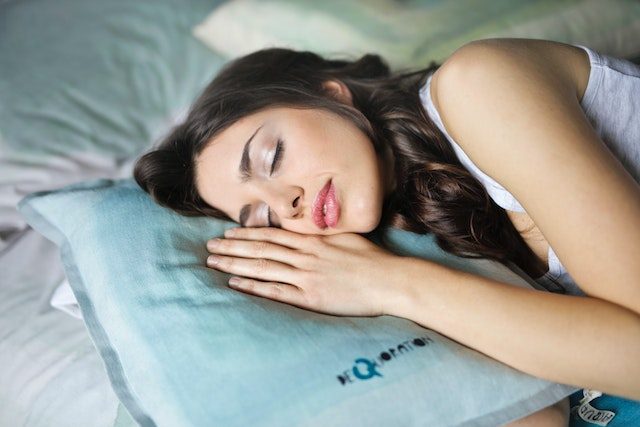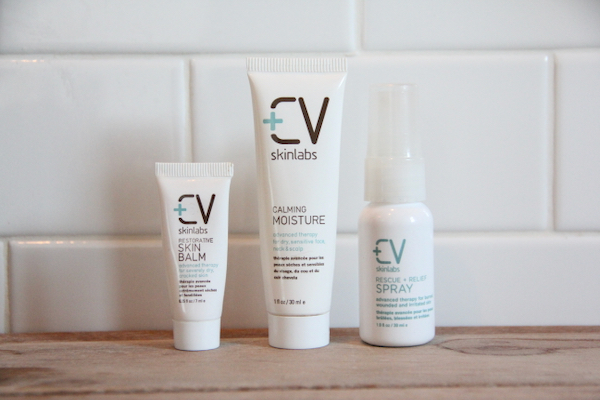
Did you know that exercise and skin health go together?
Even the American Academy of Dermatology (AAD) agrees that working out can “do wonders for your skin.”
Here’s how to make sure you get all the youthful skin benefits you deserve from your daily workout.
Exercise and Skin: 5 Ways Your Workout Helps You Look Younger
1. Improves Blood Flow Nourishes Skin Cells
When you exercise, your heart steps up its work to pump blood throughout the body. This extra blood gets oxygen and nutrients to your skin cells, giving them everything they need to conduct skin repair. It also helps carry away waste products from the skin, flushing cellular debris out of the system.
2. Decreases Stress
We’ve talked about how stress damages the skin and makes you look older. It aggravates skin conditions like eczema and psoriasis, dries the skin, and spikes cortisol levels. Cortisol impairs barrier function and over time, can cause premature aging.
Exercise helps you shed stress, which in turn, helps keep stress from damaging your skin. Since cortisol can spur oil production on your skin, regular exercise may also help you reduce your acne breakouts.
3. Makes You Look Younger!
Dermatologists have long suspected that exercise can help you look younger. Several studies have shown evidence of this.
In one study, for instance, researchers found that after the age of 40, the men and women who exercised frequently had markedly thinner, healthier stratum corneums and thicker dermis layers in their skin. Their skin was much closer in composition to that of the 20- and 30-year-olds than to that of others of their age, even if they were past age 65.
In another study, researchers found that those who regularly exercised (more than four hours per week of high-intensity aerobic exercise) were able to slow skin aging and reduce skin thinning compared to those who were sedentary (less than one hour per week of high-intensity aerobic exercise).
4. Inspires Changes in Skin Cells
Inside each skin cell is an engine called the “mitochondria.” This engine creates fuel known as ATP. This fuel is needed to repair skin damage and keep the skin looking young.
As we age, unfortunately, our cells’ mitochondria start to make less ATP. Exercise, however, can jumpstart the mitochondria and get it working harder again. This may, in turn, give the skin more of what it needs to maintain its structure and health.
5. Helps You Sleep Better!
A lack of sleep makes you look older.
You already know that sleep deprivation is bad for your overall health. But recent research has shown that it’s bad for your skin too.
In one study involving 60 women between the ages of 30 and 49, researchers evaluated the skin while asking the women about their sleep habits. They found that poor-quality sleepers showed increased signs of skin aging including fine lines, uneven pigmentation, slackening of skin, and reduced elasticity.
Good quality sleepers, on the other hand, recovered more efficiently from stressors on the skin and showed younger-looking skin overall.
If you’re having trouble sleeping and you’re noticing negative changes in your skin, try daily exercise. Studies show it can help. In one 2018 review, scientists found that exercise improved sleep quality, and in an earlier study, exercise promoted increased sleep efficiency and duration no matter what type of exercise the participants engaged in.
Exercise and Skin: Take a Few Precautions
As you can see, physical activity has a direct positive effect on skin cells. But you have to take a few precautions. If you don’t, you could end up with increased acne breakouts, skin infections, redness, irritation, and chafing.
These outcomes are easy to avoid. Just make sure you:
- Remove your makeup before you work out. When you sweat, the makeup can clog your pores, causing breakouts and other skin issues.
- Protect your skin. If you’re exercising outdoors, don’t forget to protect your skin from the sun. Apply a broad-spectrum, water-resistant sunscreen with an SPF of at least 30 to all skin not covered by clothing.
- If working out causes your skin to become chapped or windburned, apply some moisturizer (our Restorative Skin Balm works great!) before heading out.
- Choose the right fabrics. Synthetic fabrics like nylon and polyester wick sweat away from your skin and dry quickly, preventing clogged pores and cooling your overall body temperature. Make sure your workout clothes fit loosely, as tight clothing can rub against and irritate your skin.
- Wear the right shoes. To avoid blisters and chafing, make sure your shoes fit well and wear moisture-wicking socks.
- Stay clean. Cleanse your skin after exercising. A shower is best if you can. Otherwise, wash your face with a gentle cleanser. Avoid contact with equipment or towels that aren’t clean, as they can cause skin infections.
How CV Skinlabs Can Help with Your Exercise and Skin Health Goals
If you haven’t been exercising regularly lately, we suggest you try it for 3-4 weeks and see if you see improvements in your skin. Try a daily 30-minute walk or jog, sign up for a dance or spinning class, or get involved in community sports.
The important thing is to choose something you will enjoy and stick with for the long term. It can be as simple as getting a group of friends together for a daily bike ride or making sure you’re the one to take the dog for a walk.
We suggest you use our products to make sure you don’t experience any negative effects of exercise:
- Our Restorative Skin Balm applied before exercise can help decrease your risk of chafing and irritation.
- Our moisturizers (Calming Moisture and Body Repair Lotion) are great after your post-workout shower for maintaining the skin benefits of exercise. You can also use them before you go out to be sure your skin stays protected.
- Our Rescue + Relief Spray makes a soothing mid-workout mist to help prevent mid-workout dryness and flush away sweat.
Have you noticed a connection between how often you exercise and how your skin looks?



